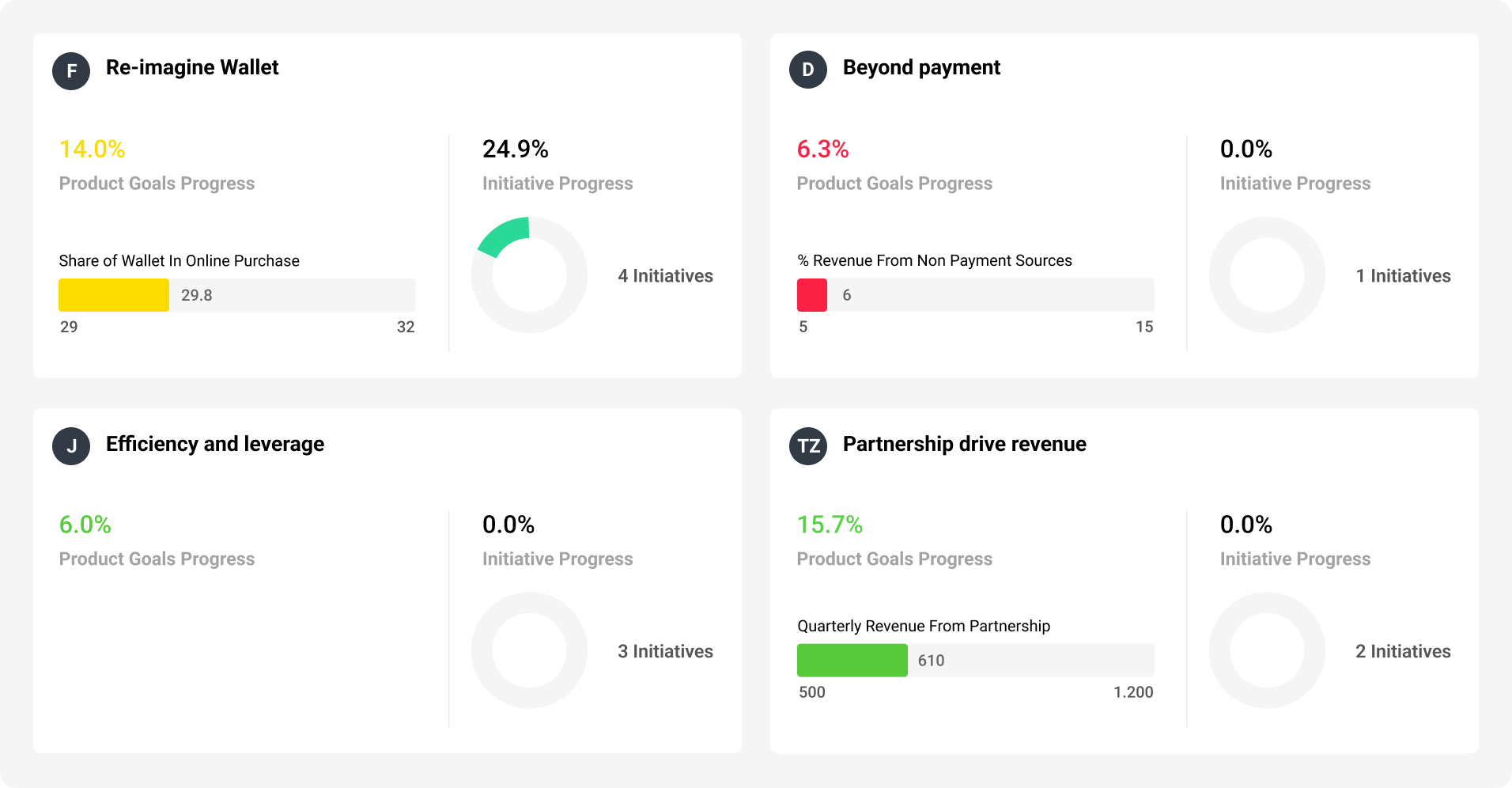Executive Summary
In working with 100s of world-class Chief Product Officers (CPOs), we found a pattern that leads to success, particularly for new Chief Product Officers (CPOs) starting on a new challenge in a new organization. The most successful Chief Product Officers (CPOs) do an incredible job making an impact within their first 90 days by focusing on four key areas.
Instead of worrying about making massive, overarching changers, they focus on:
- Using curiosity to assess the current situation
- Building deep relationships while aligning goals
- Introducing new operating structures – not sweeping changes
- Providing a source of truth that builds org-wide visibility and trust
Start slow. Accomplishing the above in your first 90 days ensures you’ll establish credibility. You don’t want to be the new Chief Product Officer who comes in too hot—quickly making overhauls and rapidly changing everything without the proper context. If you do, you’ll likely step on people’s toes and have difficulty building the trust you need to bring your long-term vision to life.
In this post, I dive deeper into the four areas of focus. I also outline tangible examples for quick wins. These are key takeaways that you can use to guide your 90-day success plan.
New CPOs Wanted
Search for “Chief Product Officer jobs” and see how many listings appear. 14,797. That’s the number you’ll see on various job boards (at least at the time of this writing). There’s good reason so many companies are waking up to the need for this pivotal role.
The Chief Product Officer oversees an organization’s entire product portfolio while:
- Tying product work to company strategy
- Making the best investment decisions that drive outcomes
- Keeping their teams motivated and focused
- Helping navigate internal stakeholders to keep the product org viewed as a strategic partner, not an order taker or feature farm.
Chief Product Officers balance multiple dimensions, including customer needs, business goals, and engineering resources. They set the top-down strategy and empower their teams to create the bottom-up plan.
After talking with dozens of CPOs, I’ve found that there are two trends:
- CPOs are the newest role in the C-Suite
- The most significant skill gap for new CPOs is portfolio management
These trends don’t surprise me. The CPO role is very fresh and new to many organizations. It requires a mentality change from delivering features to driving outcomes. It also means taking a broader perspective, from one product to the entire portfolio.
But the Chief Product Officer cannot do it alone. They must communicate effectively and collaborate with the Chief Financial Officer (CFO) for budget, the Chief Revenue Officer (CRO) to drive revenue, and the Chief Customer Officer (CCO) to retain customers.
The responsibilities of a Chief Product Officer come with pressure and an expectation to implement meaningful change with significant results. This is precisely why I’m writing this blog post—to give you a 90-day success plan so you can lead your product organization with confidence.
Here are the most critical areas to focus on in your first 90 days as Chief Product Officer:
Assess the Situation With Curiosity
Before you do anything with the product, you first need to understand who is your primary team, what’s working and what’s not. This means that prior to implementing changes, you need to go on a listening tour.
- Surprise! Your primary team (aka 1st team) is not your product team. Your first team is your peer executives. Talk to them and understand business goals, and needs and align on strategies. This helps to set the foundation for building the strategic intent for the rest of the product teams, and the company.
- Also, spend time with your direct reports to understant the current situation
- Find out everything you can about the immediate problems and uncover unknowns
- Validate your assumptions and start to create an outcome roadmap
The goal is to look for quick wins and alignment with the new team. You want to discover areas of opportunity and identify things you can put into place fast to establish trust. Fix inefficiencies to create more bandwidth with the existing resources. This isn’t the time to think about who you’re going to hire or how to implement a brand new strategy—it’s all about understanding what’s been done to date, what works, what doesn’t, and how you can drive immediate impact with the existing team.
You’ll now have a set of assumptions to validate with your stakeholders as you build your plan and create your roadmaps.
Build Deep Relationships and Align Goals
This may sound counterintuitive, but your peers are more important than your boss outside of direct reports. Why? Because delivering real product innovation requires a true partnership from your cross-functional cohort, the Chief Revenue Officer, Chief Technology Officer, and Chief Financial Officer (just to name a few). This group must maintain alignment to ensure product developmentinitiatives don’t fall into the build-trap—building features without having visibility into their impact on company goals.
When collaborating with your peers, you want to find a balance between everyone’s needs. There will inevitably be competition and contention for resources and prioritization considerations. Use metrics and numbers as your friend to effectively communicate why the roadmap decisions you make will significantly impact the broader organization. Visibility is key to alignment and buy-in.
- Understand the challenges and desires of each functional area
- Map these areas back to your roadmap and keep everyone aligned on the outcomes you’re trying to achieve
- Prevent one group from overpowering the product direction
- Help everyone understand the trade-offs of prioritization and how requests fit into the higher-level strategy
Another important stakeholder is your boss’s boss. As CPO, you should have visibility with the board, partners, and customers. Ensure you’re validating your plan and creating alignment with all key stakeholders at every level.
Create a New (Product Operating) Structure
Now it is time to create a new structure, but not an organizational structure, a new communication, operations, and delivery structure. You can’t completely overhaul corporate operations in 90 days, but you can evolve this layer within the product org. Start by making the shift from building features to becoming outcome-focused.
In tackling this now, you’ll create a culture from the beginning around how your work connects to company goals. You’ll also set your department up for success by showing how it is a strategic driver of the organization’s ability to succeed and stay competitive.
To accomplish this, Chief Product Officers need someone who can become their right hand.
- Bring on a product operations role or up-level someone to fill this gap
- Product Ops will help you run the strategic operations of your org to enable an influential, outcome-focused group
- Think of Product Ops as the COO of the product org
Putting a good ops structure in place from the start ensures you facilitate a healthy rhythm of alignment across goals, strategies, and prioritization. It also forces compelling product delivery cadences and stakeholder engagements, which are crucial to your success.
Deliver Quick Wins and Provide a Source of Truth
Today’s most successful businesses and product leaders realize that spreadsheets and docs are no way to run a real business. Wins don’t always have to be shiny new features. Sometimes the most impactful wins are around:
- Providing visibility into roadmap strategy and plan
- Stakeholder reporting to understand objectives and progress
- Communicating the why behind prioritization decisions
To provide this level of detail, you’ll need to create a strategic framework that guides product decisions across all levels. You’ll need a portfolio management tool to help.

With a modern tool in place, you’ll be able to:
- Define your strategic drivers to empower your teams
- Standardize your prioritization framework to align stakeholders
- Set resource allocation towards objectives (OKRs) and initiatives
- Auto track delivery progress and predict risks for timely mitigation
A good portfolio management tool should provide visibility on outcomes, roadmap strategy, as well as how prioritization decisions are made.
Now your team can make the best product decisions across the portfolio to deliver customer delight and business outcomes.
Lastly, share away!
You’ll want to view and share roadmap progress roll-ups at all levels by dimension and in real time. This requires specific roadmaps for each unique audience. A portfolio platform will allow you to quickly create and share these views in a few clicks, using the same real-time data.

Can’t decide what type of tool you need? We have a guide for you: How to Choose Between a Roadmap and Product Portfolio Management Tool.
Congratulations! With this level of visibility, you have created one central source of truth—all within your first 90 days. That in and of itself is an accomplishment worth celebrating.
Conclusions
The next wave of successful Chief Product Officers will focus on:
- Applying a portfolio approach to balance the needs of customers, business goals (OKRs), and engineering capabilities to achieve the best product outcome
- Taking a responsive approach to planning, strategizing, allocating, and dynamically re-adjusting
- Achieving near-term results and long-term vision within limited time and resources
- Continuously promoting progress and sharing the source of truth, believing that transparency creates trust
Final thought: As a new Chief Product Officer, you have the opportunity to shape what greatness looks like for this role. There’s never been a better time to lean in, learn new product frameworks built for portfolio leaders, and adapt and adjust in real-time.




